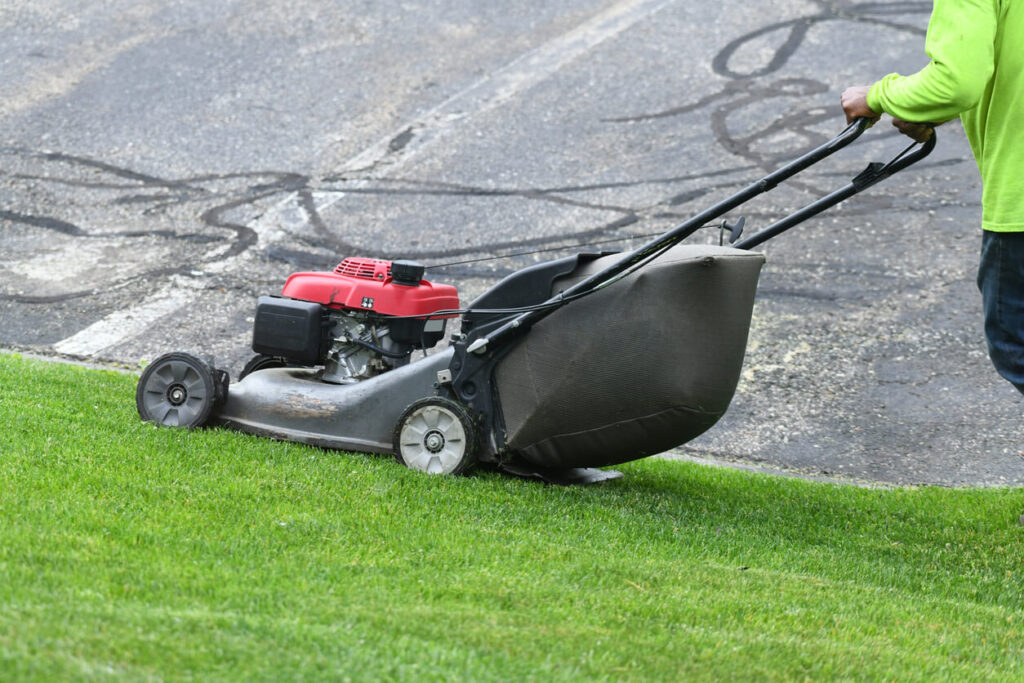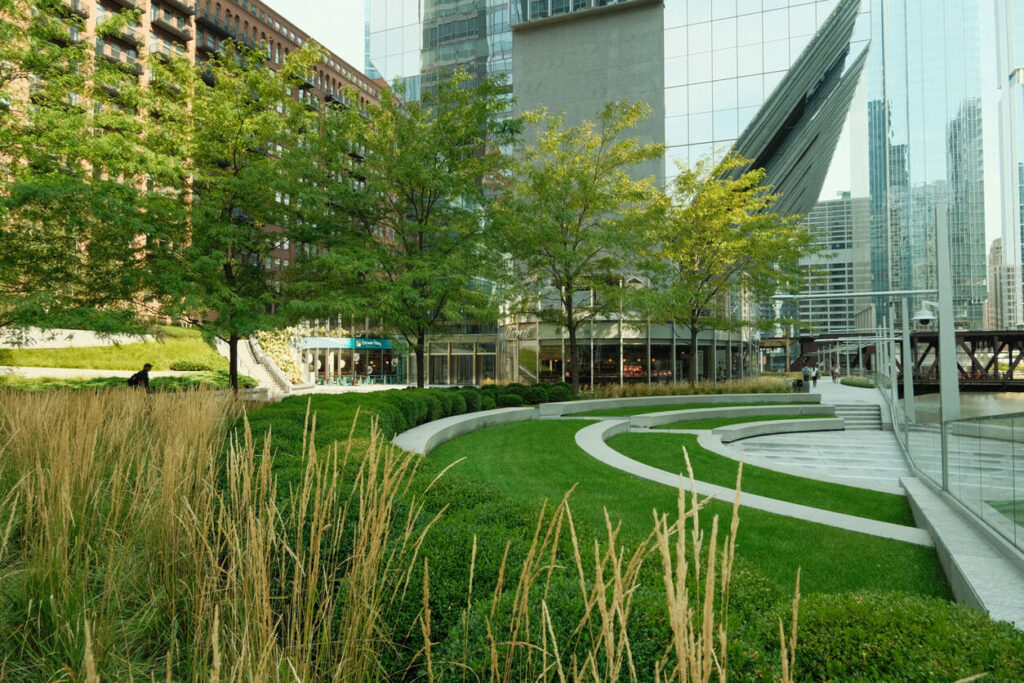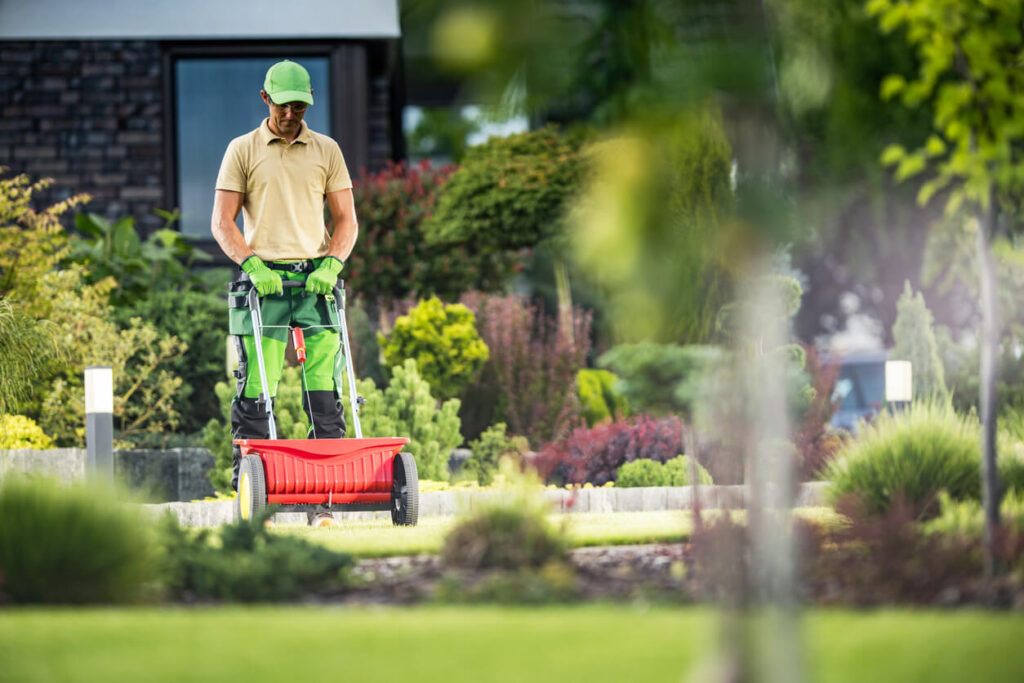Starting a new landscaping project with a yard full of thick, stubborn grass can seem overwhelming. The first step in transforming your space is learning how to clear this grass effectively.
Whether redesigning a commercial property or making aesthetic adjustments at home, properly removing grass lays a solid foundation. It is essential to comprehend the various lawn removal methods and their impacts on soil and future plant health.
Let’s explore various techniques for appropriately removing grass and securing a strong foundation for your landscaping project to start on the right foot.
Why Is Grass Removal Before Landscaping Important?
Removing grass is more than just clearing the ground; it sets the stage for a healthier, more beautiful garden space. Here’s why it’s a crucial step in landscaping:
- Prevents Weed Growth: Removing grass helps reduce the seed bank of existing weeds, making it easier to maintain your garden later. This action significantly lowers the emergence of weed seeds, helping maintain clean garden beds.
- Improves Soil Quality: It allows you to add fresh organic matter and amendments, boosting the health of your soil for planting. Enriching the soil with a layer of mulch and other organic materials can improve soil moisture and nutrient levels, promoting healthy soil microbiomes.
- Ensures Design Flexibility: Clearing the area gives you a blank canvas, which is essential for implementing any new design efficiently. It’s ideal for both intricate floral arrangements and broad, minimalistic garden spaces.
- Reduces Pest Problems: Many pests thrive in dense grass. Removing it helps minimize this issue. This can particularly protect root systems from being damaged by ground pests.
- Enhances Aesthetic Appeal: A clean site is visually appealing and easier to work with, enhancing the overall design process. With all the old grass gone, laying down new lawn alternatives or installing features like drip lines becomes simpler.
- Saves Time and Effort: A thorough initial cleanup saves you maintenance time down the line, making the landscaping process smoother. This means less labor in the future to manage unexpected issues like widespread weed growth or uneven soil surfaces.
Ways of Removing Grass for Landscaping
1. Sheet Mulching
Sheet mulching effectively removes grass by layering organic materials such as leaves, wood chips, and sometimes layers of newspaper to create a dense mat. This mat not only smoothes grass but also decomposes it into nutrient-rich soil, enhancing soil health.
The benefit of sheet mulching lies in its simplicity and minimal physical labor, making it an eco-friendly choice. Over time, this process enriches the soil with organic matter, making it fertile ground for future planting.
2. Solarization
Solarization involves covering the grass with clear plastic sheeting to intensify the sun’s heat, which kills the grass, weeds, and soil pathogens. This method is especially effective in sunny regions and can significantly decrease the viability of weed seeds buried in the soil.
Besides eradicating unwanted vegetation, solarization also improves the overall soil biology, creating healthier soils for new plants. It’s a natural process that can prepare your garden bed without the use of harmful chemicals.
3. Physical Removal
Removing grass physically using tools like a flat shovel or a sod cutter can provide immediate results for those needing a quick turnaround. This method is labor-intensive but allows for direct control over the area cleared and is ideal when preparing soil for planting immediately.
Although physical removal demands significant manual labor, it avoids the use of chemicals, making it a good option for maintaining soil health. This approach is often used for smaller garden spaces or when precise removal is necessary.
4. Kick Sod Cutter
The kick sod cutter is an essential tool for precise grass removal in small to medium-sized areas, allowing for detailed work without damaging the surrounding landscape. This manual tool cuts a thin layer of soil, enabling easy rolling and removal of sod.
It is less disruptive to soil structure compared to heavier equipment and requires only moderate physical effort. Using a kick sod cutter is practical for gardeners who prefer physical tools over chemical solutions.
5. Motorized Sod Cutter
For larger areas, a motorized sod cutter offers an efficient way to clear grass quickly, reducing both time and labor significantly. This tool slices through the turf seamlessly and rolls it up for easy removal, preserving the underlying soil structure.
Motorized sod cutters are ideal for extensive landscaping projects where saving time is crucial. Their powerful cutting action makes them suitable for preparing large plots of grass for new landscape features.
6. Rototill
Rototilling the land can raise the soil and effectively slice through the grassroots, which is beneficial when preparing a new garden area. However, it’s important to use this method carefully, as it can disturb the natural soil structure and potentially spread dormant weed seeds.
Rototilling is appropriate for integrating organic matter into clay soils, improving aeration and moisture retention. Yet, it should be done methodically to minimize damage and provide a stable base for planting.
7. Herbicides
Using chemical or organic herbicides can be the fastest method for grass removal. They target the roots for complete eradication. While effective, they require careful application to avoid affecting non-target plants and minimize environmental impact.
There are specific herbicides designed for different types of grasses and situations, including selective and non-selective options. It’s vital to follow all safety guidelines and consider long-term soil health when choosing to use herbicides for grass removal.
Note: While there are numerous effective methods for removing grass, ranging from eco-friendly techniques like sheet mulching and solarization to the more immediate results from physical removal or using sod cutters, the process can be demanding in terms of both tools and time.
If you’re lacking the necessary tools or materials, or if your schedule is too tight to tackle these landscaping tasks yourself, it might be a good idea to consider hiring a professional landscaper. They bring both expertise and experience to the table, offering a hassle-free solution that allows you to achieve the perfect groundwork for your next landscaping project.
How to Remove Grass for Landscaping Naturally
- Choose natural methods like sheet mulching, which involves layering newspaper or unwaxed cardboard with a generous layer of mulch.
- Gather materials from around your home or local garden centers, making this not only eco-friendly but also cost-effective.
- Layer the materials evenly across the grassy area, aiming for complete coverage to block sunlight and suppress any new weed growth.
- Allow the setup to sit through the growing season, giving the grass time to die off and decompose naturally.
- Once the process is complete, you’ll have rich, healthy soil ready for planting, enriched by the decomposed organic materials.
How to Remove Grass for Landscaping by Hand
- Using a flat shovel or a garden fork, cut into the turf about six inches deep to undercut the root systems effectively.
- Pry up the segments of turf, roll them up or lift them out, and shake off any excess soil to preserve the soil quality.
- Ensure to remove as much of the root system as possible to prevent any leftover grass from regrowing.
- Prepare the bare soil by adding amendments like a nice layer of compost or organic mulch to enhance soil health before planting.
- Rake the area smooth and clear any remaining clumps of grass or debris, leaving a clean and prepared site for your new landscaping project.
How Do Landscapers Remove Grass?
If hiring a landscaper is on your mind, you’ll benefit from a well-structured, professional approach that emphasizes both efficiency and quality results. Here’s how landscaping professionals typically manage this process, making sure your outdoor space is prepared for its next transformation.
Step 1: Site Assessment
Professional landscapers start by thoroughly assessing the project site to determine the most suitable method for grass removal. They evaluate factors such as the type and health of the grass, soil condition, and the desired outcome of the landscaping project. This thorough analysis helps in planning the most effective approach to meet specific landscaping goals.
Step 2: Choosing the Right Method
Based on the findings from the initial site assessment, landscapers choose the appropriate removal method. This decision considers the size of the area, the type of vegetation present, and the project timeline. The chosen method could range from mechanical means like sod cutting to using herbicides or opting for natural methods like mulching.
Step 3: Preparing the Equipment
Once the method is selected, the next step involves preparing all necessary equipment. This preparation helps keep the tools ready and in optimal condition, facilitating a smooth and uninterrupted operation. Proper equipment handling also prevents lawn damage and increases efficiency.
Step 4: Executing the Removal
Landscapers then execute the chosen method meticulously to remove the grass thoroughly and prepare the land for new plantings or other landscaping elements. This phase is critical as it sets the foundation for the entire landscaping project, affecting the final appearance and health of the garden or yard.
Step 5: Soil Preparation
Following grass removal, significant attention is given to soil preparation. This usually involves tilling, enriching the soil with organic matter such as compost or a layer of mulch, and carefully balancing pH levels. Proper soil preparation creates optimal conditions for plant health and growth.
Step 6: Cleanup and Disposal
The final stage involves cleaning the area and responsibly disposing of the removed grass, including dead grass and other organic debris. This step is important for maintaining a tidy work environment and ensuring that new plantings have clean, unobstructed space to thrive.
In some cases, black plastic may be used to cover and further compress any remaining organic material, reflecting the professionalism and attention to detail of the landscaping service.
Your Top Questions, Explained Here
What Is the Easiest Way to Remove a Lot of Grass?
Using a motorized sod cutter is the simplest and quickest method for extensive lawn removal. This tool cuts through the turf efficiently, allowing for the fast clearance of large plots of grass with minimal labor. It’s particularly effective as it reduces the physical labor involved compared to manual techniques.
How Much Do Landscapers Charge to Remove Grass?
Landscaping costs for grass removal depend on the area’s size and are usually priced per square foot. Prices typically range from $0.50 to $2 per square foot, reflecting the complexity and tools required for the job. These rates typically include both the removal of the grass and the subsequent area clean-up, providing a prepared surface ready for new planting.
Take note that the costs of grass removal can vary widely based on location, the specific conditions of your property, and the additional services required. For an accurate estimate tailored to your needs, it’s advisable to consult with professional landscapers.
Do I Have to Remove Grass Before Planting Ground Cover?
Yes, clearing the grass before introducing ground cover is highly recommended. Removing grass minimizes competition for essential resources like water and nutrients, facilitates the establishment of ground cover, and supports soil health. Adequate removal also streamlines maintenance and increases the effectiveness of any weed barrier system that might be installed.
Give Your Garden the Fischer Touch—Schedule a Consultation Today!
Efficient grass removal is essential for creating a space that’s ready for fresh landscaping ideas. It eliminates competition for resources, allowing new plants to flourish and improving overall garden health.
If you are eager to upgrade your landscape but unsure where to start, Fischer Landscaping is your ideal partner. Our approach combines efficiency with environmental consideration, offering superior results while preserving the integrity of your land. Choose Fischer Landscaping for a service that prioritizes sustainability and quality.
Contact us to take the first step towards a beautiful and sustainable landscape today.




